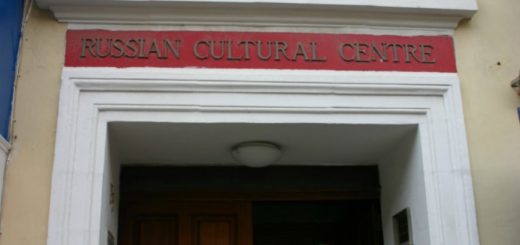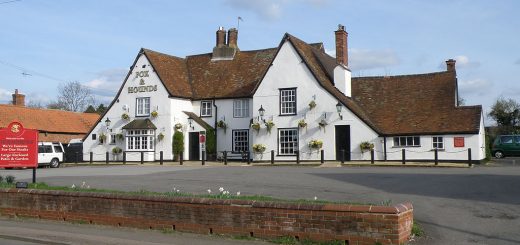Hollow Demon Oak
A tree known as Derwen Ceubren yr Ellyl (hollow tree of the demons/spirits) used to stand in Nannau Park and it had a reputation of being haunted and evil, for this is the tree in which Owain Glyndwr was, according to legend, supposed to have hidden the body of his cousin Hywel Sele, 8th Lord of Nannau after he had killed him in 1404. It is said they were out hunting together in Nannau after Owain had come to make amends with his cousin. Owain had rebelled against England, whilst Hywel stayed loyal to the crown. Hywel is said to have seen a deer and drew back an arrow. As the deer moved he turned with his bow to track the animal, in fact he turned so much he found himself aiming at Owain. Glyndwr thought he was about to be shot, drew his sword and ran Hywel through. Other accounts have Hywel shooting Owain who is saved by his armour (hunting in armour?) and he is killed in self defence. One version of the story has Hywel being imprisoned in the tree and left there to die whilst Owain decided to burn down his house.
Though the family of Hywel searched in vain they could not find any trace of him and his wife became withdrawn, hiding herself away. Hywel left a two-year old heir called Meurig Vychan, who was then raised by his uncle, Gruffydd Derwas. It is said forty years passed before Owain instructed his friend Madog to visit Hywel’s widow and tell her of her husband’s fate. Immediately his family visited the oak and split it open revealing his skeletal remains inside. Again the time frame points to this story just being a legend as nothing is known of Owain after 1412 and it is unclear where or when he himself passed away. But as he was born in either 1354 or 1359, he would not have survived to see 1444. Other accounts have the body being found by accident after the forty year period.
Stories of supernatural activity, triggered by the legend then surrounded the tree, with claims that fire could be seen hovering above it and that it emitted strange noises at night.
The tree was described by Pennant in 1778 as being 27ft ,6ins in girth and “in its last stages of decay and pierced by age into the form of a gothic arch.” The oak fell during a storm in 1813 after being hit by lightening and later that July it was cut up for firewood, though several special collectable items were crafted from it’s special timber.
In “A Legend of Merioneth” published in the late 1800’s a version of the death of Hywel and what befell the tree are described.
’Owen and this chieftain had been long at variance. I have been informed that the Abbot of Cymmer Abbey, near Dolgellen, in hopes of reconciling them, brought them together, and to all appearance, effected his charitable design. While they were walking out, Owen observed a doe feeding, and told Howel, who was reckoned the best archer of his day, that there was a fine mark for him. Howel bent his bow, and pretending to aim at the doe, suddenly turned, and discharged the arrow full at the breast of Glyndwr, who fortunately had armour beneath his clothes, so received no hurt. Enraged at this treachery, he seized on Sele, burnt his house, and hurried him away from the place ; nor could any one ever learn how he was disposed of, till forty years after, when the skeleton of a large man, such as Howel, was discovered in the hollow of a great oak, in which Owen was supposed to have immured him in reward of his perfidy.”
This oak, the terror of every peasant for miles round, remained in its place till within these few years, when one morning, after a very violent storm, it was discovered, to the great regret of its worthy proprietor, blown to the ground, and its superannuated vitality destroyed for ever. All that could be done with it was done. Sir Robert had it manufactured into work-tables, cabinets, drinking-vessels, and, to extend its circulation still further, into snuff-boxes ; these are distributed among the Baronet’s friends, and highly are they valued by their fortunate possessors, not only as the gifts of a gentleman almost idolized in Merionethshire, but as the relics of so venerable and remarkable a parent.’
Edward Bulwer-Lytton mentioned the tree in his romance of Arthur “Of evil fame was Nannaii’s antique tree, Yet styled the hollow oak of Demonrie.”

























Re: Hollow Demon Oak
This is how the case was covered by John Ingram in ‘The Haunted Homes and Family Traditions of Great Britain’ (1897)
Nannau, the ancient residence of the Vaughan family, in Merionethshire, is said to stand upon the highest ground of any gentleman’s seat in Great Britain. In the days of the famous Owen Glendower, this romantically-situated dwelling was occupied by Howel Sele, a first cousin of the Welsh prince. The cousins do not appear to have lived on friendly terms, Howel Sele siding with the Lancastrians, whilst Glendower, it need scarcely be remarked, was a fierce Yorkist. Ultimately their antagonism came to a fatal termination. There are several versions of the legend, but it is better to adopt that related by Pennant because, although it does not accord with some of the ballads on the subject, it appears to have a historic basis. The historian states that Glendower and Sele having long been at variance, the Abbot of Kymmer brought them together in hopes of reconciling them, and had, apparently, succeeded in effecting this charitable purpose. Whilst the two cousins were out hunting together, after their apparent reconciliation, Owen observed a doe feeding, and remarked to Howel, who was considered the best archer of the day, that there was a fine mark for him. Howel bent his bow and, pretending to take aim at the doe, suddenly turned and discharged his arrow full at Glendower’s breast :
Then cursed Howel’s cruel shaft,
His royal brother’s blood had quaffed,
Alas! for Cambria’s weal!
But the false arrow glanced aside,
For ‘neath the robe of royal pride,
Lay plate of Milan steel
Fortunately for him the Welsh chieftain, as described by the poet, had armour beneath his clothes, and therefore received no hurt. But, enraged at his kinsman’s treachery, he turned upon him fiercely, and although Howel was fully armed, after a short conflict, slew him! The next thing was how to dispose of the body ; and according to the ballad of the Spirit’s Blasted Tree, by the Kev. George Warrington, it wa3 Madog, Glendower’s companion, who suggested for the place of
sepulture –
A broad and blasted oak,
Scorched by tbe lightning’s vivid glare,
Hollow its stem from branch to root,
And all its shrivelled arms were bare.
Be this, I cried, the proper grave
(The thought in me was deadly sin) :
Aloft we raised the bapless chief,
And dropped his "bleeding corpse within.
After this dire catastrophe Glendower returned in haste to his stronghold, without, of course, giving any information to the Lord of Nannau’s people. Howel was sought for in every direction, hut was nowhere to be found. His alarmed retainers hunted through all the recesses of the neighbouring forest, the while his sorrowing wife shut herself up from all comfort in the solitude of her gloomy castle. The years passed by, and no tidings reached Nannau of the missing lord:
Yet Fancy, in a thousand shapes.
Bore to his home the chief once more;
Some saw him on High Mod’s top,
Some saw him on the winding shore.
With wonder fraught, the tale went round-
Amazement chained the hearer’s tongue,
Each peasant felt his own sad loss,
Yet fondly o’er tho story hung.
Oft by the moon’s pale shadowy light,
His aged nurse, and steward gray.
WduM lean to catch the storied sounds,
Or mark the flitting spirit stray.
Pale lights on Cader’s rocks were seen,
And midnight voices heard to moan ;
‘Twas even said the Blasted Oak,
Convulsive, heaved a hollow groan
But still the fate of Howel Sele remained unknown to everyone save Glendower and bis companion Madog. At last, after ten years of silence, Glendower died, and the partaker of the chieftain’s secret was at liberty to reveal the mystery ; his lord’s last words being:
To Sole’s sad widow bear the tale,
Nor let our horrid secret rest:
Give but his corse to sacred earth,
Then may my parting soul be blest,
Madog hastened to obey his prince’s last behest, and, as soon as events allowed, betook himself to Nan nan’s saddened home, and told the horrified and long-hoping wife that she was a widow indeed. The revelation was rapidly noised abroad among the retainers, and confirm- ation of it demanded; Madog led them to the blasted oak, which was hastily rent open, and the bleaching skeleton exposed to view :
Back they recoiled the right hand still,
Contracted, grasped the rusty sword;
Yv’hich erst in many a battle gleamed,
And proudly decked their slaughtered lord.
They bore the corse to Vanner’s shrine,
With holy rites and prayers address’d ;
Nine white-robed monks the last dirge sang,
And gave the angry spirit rest.
But notwithstanding the burial rites were read, and many masses said for their dead lord, his spirit was not believed to be at rest, and almost down to the present day the fearsome peasant has dreaded to pass at night by the blasted oak, "the hollow oak of the demons." Until its fall and destruction on the 13th of July 1813, the haunted tree was an object of nocturnal dread, and the poet could truly say:
And to this day the peasant still
With fear avoids the ground;
In each wild branch a spectre sees,
And trembles at each rising sound.